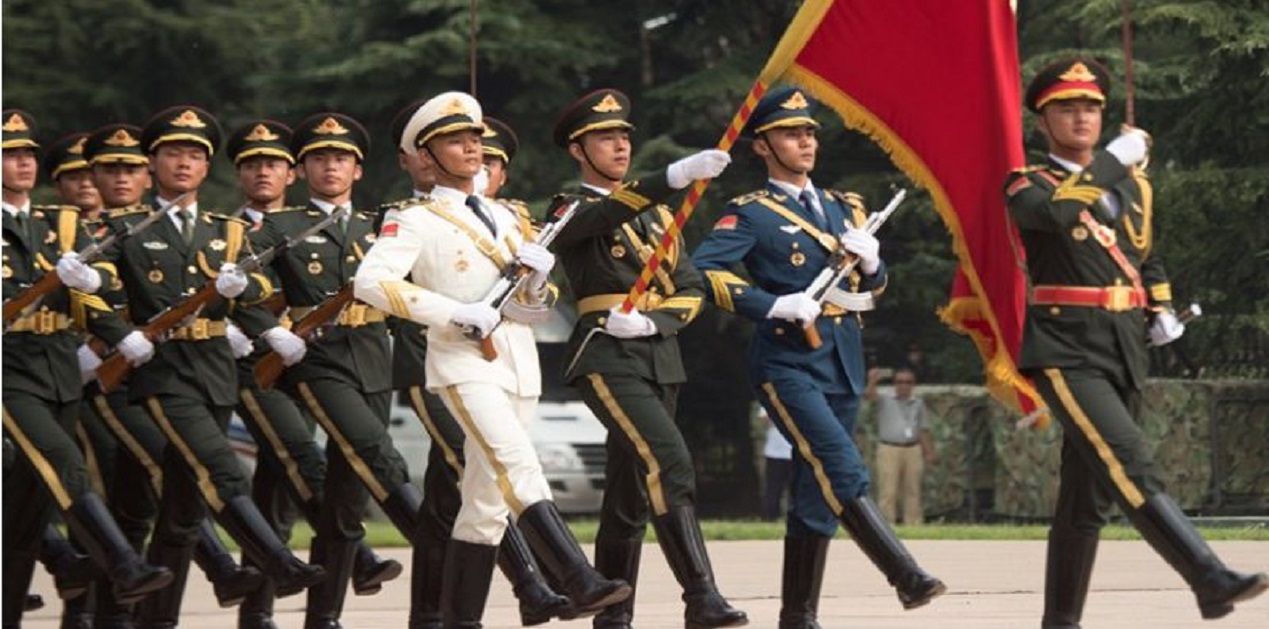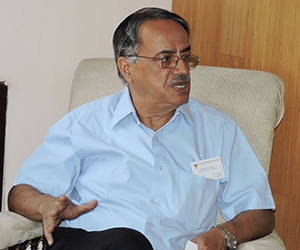China’s White Paper on defence titled ‘China’s National Defense in New Era’ of 2019, coming after a gap of four years, bears a strong imprint of President Xi Jinping on Beijing’s defence and security policies and strategies. Though this new era could be said to have begun when Xi Jinping took over power as General Secretary of Communist Party Congress (CPC) in November 2012 and as President in March 2013, in effect, his personal stamp on China’s foreign and security policies started becoming more visible when he unveiled his Belt and Road Initiative (BRI) in October 2013, talked about ‘Chinese Dream’ of national rejuvenation and then gave a push to ongoing defence reforms.
The long speech of Xi Jinping giving out work report to the 19th CPC in October 2017 devoted considerable time to matters military and how China would build a world class military by 2050. The current White Paper on defence reflects largely the formulations and articulations as mentioned in Xi Jinping’s Report to 19th CPC. It also includes exhortations of Xi on deeper civil-military integration made during the first plenary session of the Central Commission for Civil-Military Integration in June 2017 and other speeches made elsewhere for strengthening the military.
While the Defence White papers of 2013 and 2015 were thematic papers the current one’s format is different, somewhat more like those of the earlier papers. But this does not mean that either the earlier papers or this one reflect increased transparency in China’s defence and security policies and strategies. Further, a cursory reading of the paper may lead one to conclude that there is more of rhetoric on the lines of a communist manifesto or propaganda that were common during Cold War but a closer reading would reveal that even a minor omission or addition to the previous articulations could denote a major change in policy. For instance, in its Defence White Paper of 2015 gave the indication that Chinese Dream of national rejuvenation would be achieved by 2050. The paper observed that “The Taiwan issue bears on China’s reunification and long-term development, and reunification is an inevitable trend in the course of national rejuvenation”. Thus, Taiwan reunification was to be completed by 2050, however, such a formulation is absent from the current White Paper. Instead, not only Taiwan has been referred to a dozen times compared to only three times in the 2015 paper but also the rhetoric against Taiwan ‘separatism’ has become more strident with the threat of use of force. Therefore, it would not be wrong to conclude that China would be preparing to take over Taiwan militarily much before 2050. Evidently, China would need a confluence of several favourable factors, both endogenous and exogenous, to achieve success in such a risky venture.
According to the paper the overall situation in Asia-Pacific remains generally stable and as usual, the American military alliance system and their partners are to be blamed for such activities that cause instability. North Korea’s role in causing instability in Korean peninsula does not find any mention. In South China Sea, since last paper of 2015, China has increasingly militarized the islands, deployed missiles, developed airfields for military aircrafts, constructed artificial islands and consolidated its hold over the areas it claims. The paper asserts that “The South China Sea islands and Diaoyu Islands are inalienable parts of the Chinese territory”, and justifies the development of military infrastructure and deployment because of sovereignty rights.
Recent movement of China’s Chinese survey ship, Haiyang Dizhi 8, and its escorts in Vietnam’s EEZ for oil exploration activities only reflect China’s continued assertive policies in South China Sea. Other claimants in the South China Sea have also been at the receiving end of China’s coercive approach which leads to instability in the region. Using economic carrot and military heft China has been increasingly able to influence policies of the countries in the region. In fact, in last four years China has expanded its military capabilities and has become more confident in its dealings with the ASEAN countries as also with outside military presence.
In so far as India is concerned, while the last paper did not find any mention, the present one mentions India at several places, especially, in connection with efforts at maintaining peace and stability along the border after Doklam standoff in 2017, India becoming a member of Shanghai Cooperation Organization and joint bilateral military exercises and some multilateral exercises carried out as well. Largely, the tone is either neutral or somewhat positive as regards India. However, while comparing average defence expenditure as percentage of GDP, from 2012 to 2017, the paper mentions India’s defence expenditure as 2.5% which apparently is not correct. India’s defence expenditure for last several years has hovered below 2% of the GDP. Moreover, it is well known that China’s defence expenditure does not include funds spent for procuring China’s indigenous weapons and equipment, some research and development costs, the expenditure for People’s Armed Police (which is now under direct control of Central Military Commission or CMC) and funds given to military factories. SIPRI estimates of China’s defence budget are generally 50 percent more than what China’s official figures are.
What, perhaps, could be an indirect reference to India is the formulation in the paper that “The international non-proliferation regime is compromised by pragmatism and double standards, and hence faces new challenges”. One can only interpret this as China’s stubborn opposition to India’s efforts at becoming member of Nuclear Suppliers Group and consequently, finding some sort of equivalence between India and Pakistan on the question of nuclear proliferation issues. India’s credentials of non-proliferation are well known and appreciated by international community but this formulation in the paper only indicates that China is unlikely to help India emerge as a competing power in Asia in anyway and especially so in nuclear commerce.
That ‘China will never seek hegemony, spheres of influence or seek expansion’ , is merely an anodyne statement and is contrary to what it has been doing in South China Sea, South Asia and elsewhere through its BRI and enlarging the ambit of PLA for protection of its expanded overseas interests. China’s paper also avows that China is opposed to interference in the internal affairs of others. However, because of its BRI projects and other geopolitical compulsions Beijing has no alternative but to intervene in internal affairs as indeed it has done in countries like Sri Lanka, Myanmar and Pakistan etc.
There have been no change in its nuclear policy or pursuing a military strategy of ‘active defence’ which in effect, includes the concept of a pre-emptive attack. Further, the timelines for development of the defence forces largely remain similar what has been articulated in the earlier papers. PLA would achieve mechanization by the year 2020 with significantly enhanced informationization and greatly improved strategic capabilities; complete the modernization of national defense and the military by 2035 and fully transform the people’s armed forces into world-class forces by the mid-21st century.
In fact, President Xi Jinping has been able to achieve a fair degree of success in defence reforms initiated by him in 2015 that ushered in Theatre Commands by dismantling Military Area Commands (MAC) dominated by the Army. Reorganization of CMC and four general departments into fifteen organs has resulted in streamlining of their functioning and better command and control. Additionally, through his anti-corruption campaign in the military and defence reforms Xi has been increasingly able to establish his and the Party’s authority over the PLA. The paper also claims that PLA has been downsized by 300,000 to 2 million which would be a significant achievement as it will release more resources for modernizing of the PLA.
China has also established a PLA Joint Logistics Force in 2016 though jointness in logistics had commenced in 2004 as reflected in their White Paper of 2004. This is to be seen in the context of Indian defence forces while the concept of joint logistics was being talked about as early as in 1980s we are still struggling to usher in an integrated logistics system for the armed forces.
While talking about the modern weaponry, the paper only talks about induction of one type of weapon each from Army, Navy and Air Force and PLA Rocket Force, i.e. Type-15 tanks, Type-052D destroyers, J-20 fighters, and DF-26 intermediate and long-range ballistic missiles. Nevertheless, this reflects China’s continuing efforts to add to its power projection capabilities, especially so in maritime domain. The paper also acknowledges that great progress has been made in the Revolution in Military Affairs (RMA) with Chinese characteristics. Yet, it also notes that the task of mechanization is not complete and there is urgent need of improving its informationization.
Coming back to the equipment like Type-15 Tanks which is a light tank suitable for operations in mountains and high altitude areas, it has been used in military exercises held on the Tibet plateau especially around the time of Doklam standoff. Similarly, JF-20 fighters have carried out exercises over Tibet and while there has been some debate that JF-20 is meant for Taiwan as primary contingency, as such they are not meant for operations against India. However, this is a false assumption as any military capability, when required, can be switched from one location to other. DF-26 missiles deployed in Tibet with its precision strike capabilities can reach targets in continental India as also in Indian Ocean region. And Type-052D guided missile destroyers are one of the most modern naval ships that have added to the clout of PLA Navy; six of them are said to be operational and several are under construction.
It is quite evident that Indian defence forces would face increased pressure from the PLA not only along its land borders but also in the Indian Ocean in the coming years. PLA Navy has been increasing its activities and presence in Indian Ocean since 2008 when it commenced anti-piracy operations. Undoubtedly, India needs to build its full spectrum deterrent capabilities and hasten the pace of modernization of defence forces. Development of infrastructure along the borders is proceeding at a glacial pace; inadequate budgetary allotments for capital head of the defence forces has also delayed modernization. And finally, we need to enhance our cyber, space, surveillance and targeting capabilities besides developing our indigenous military industrial complex if we want to be counted as a power of some consequence.
Image Source: https://www.eurasiareview.com/wp-content/uploads/2017/08/e-800x445.jpg










Post new comment